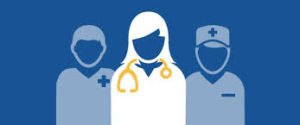Pennsylvania Health Law Project Newsletter
The Pennsylvania Health Law Project has published its February 2021 newsletter.
 Included in this month’s edition are articles about:
Included in this month’s edition are articles about:
- the continuation of certain Medicaid protections, including continuous coverage, during the COVID-19 emergency;
- COVID-19 vaccinations and state reimbursement for those vaccines;
- the availability of Medicaid-covered remote and in-home adult daily living services;
- Medicaid services for individuals between the ages of 18 and 20 who have chronic disabilities;
- a new monthly webinar that will be offered by the state’s Office of Mental Health and Substance Abuse Services; and
- Pennsylvania’s selection of a vendor to operate its Resource Information and Services Enterprise (RISE-PA), the state’s planned resource and referral tool.
Read about these subjects and more in the Pennsylvania Health Law Project’s February 2021 newsletter.
 RISE PA” – “RISE” is short for “Resource Information and Services Enterprise” – is, according to DHS, a “…collaborative effort between multiple state agencies, counties, and local non-profits and community organizations, health care, and social services providers” that will “…serve as an access point to search and obtain meaningful information to help Pennsylvanians find and access the services they need to achieve overall well-being and improve health outcomes” while serving as a “…care coordination system for providers…and a closed-loop referral system that will report on the outcome of referrals.”
RISE PA” – “RISE” is short for “Resource Information and Services Enterprise” – is, according to DHS, a “…collaborative effort between multiple state agencies, counties, and local non-profits and community organizations, health care, and social services providers” that will “…serve as an access point to search and obtain meaningful information to help Pennsylvanians find and access the services they need to achieve overall well-being and improve health outcomes” while serving as a “…care coordination system for providers…and a closed-loop referral system that will report on the outcome of referrals.” Governor Wolf
Governor Wolf Department of Health – by the numbers
Department of Health – by the numbers Spurred by concern that their counties are not receiving appropriate allocations of COVID-19 vaccines, officials of seven western Pennsylvania counties – Beaver, Butler, Fayette, Greene, Lawrence, Washington and Westmoreland – met remotely last week to discuss the possibility of creating a regional health department. The
Spurred by concern that their counties are not receiving appropriate allocations of COVID-19 vaccines, officials of seven western Pennsylvania counties – Beaver, Butler, Fayette, Greene, Lawrence, Washington and Westmoreland – met remotely last week to discuss the possibility of creating a regional health department. The  For the week from February 12 through February 18 the state’s overall COVID-19 test positivity rate fell to 6.5 percent; it was 8.0 percent the week before that. This marked the ninth consecutive week the rate fell.
For the week from February 12 through February 18 the state’s overall COVID-19 test positivity rate fell to 6.5 percent; it was 8.0 percent the week before that. This marked the ninth consecutive week the rate fell. The House Budget Committee has passed a COVID-19 relief bill. The following is a summary of the bill’s major spending, how it differs from the previous proposals submitted to the Budget Committee by other House committees, and what the bill does not do.
The House Budget Committee has passed a COVID-19 relief bill. The following is a summary of the bill’s major spending, how it differs from the previous proposals submitted to the Budget Committee by other House committees, and what the bill does not do. Provider Relief Fund
Provider Relief Fund Food and Drug Administration
Food and Drug Administration The document, The State of Our Health: A Statewide Health Assessment of Pennsylvania, generally describes the health status of Pennsylvanians today, addresses current health care challenges the state faces, and identifies areas for improvement.
The document, The State of Our Health: A Statewide Health Assessment of Pennsylvania, generally describes the health status of Pennsylvanians today, addresses current health care challenges the state faces, and identifies areas for improvement. Governor Wolf
Governor Wolf Department of State
Department of State Centers for Medicare & Medicaid Services
Centers for Medicare & Medicaid Services Centers for Disease Control and Prevention
Centers for Disease Control and Prevention The increase has been driven by rising COVID-19 pandemic-related unemployment that has cost many people their health insurance along with their jobs.
The increase has been driven by rising COVID-19 pandemic-related unemployment that has cost many people their health insurance along with their jobs. Department of Health
Department of Health As of February 17 the state’s
As of February 17 the state’s  Department of Health – by the numbers
Department of Health – by the numbers The White House
The White House